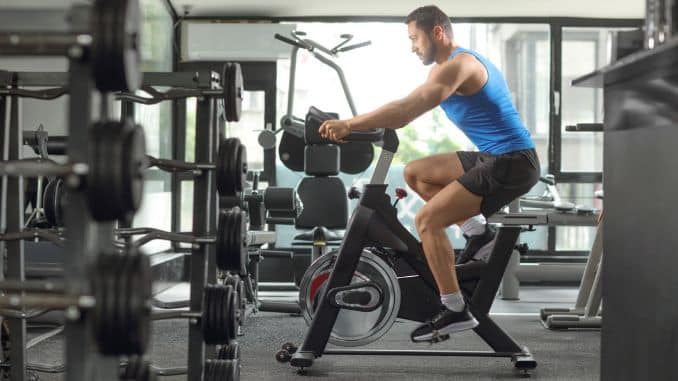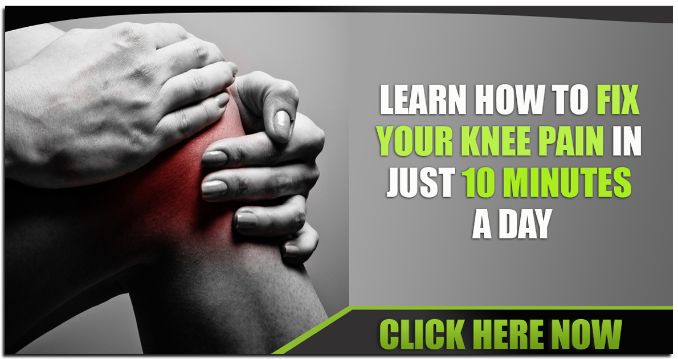Want a killer cardio workout without the hassle of bad weather, traffic, or crowded gym spaces? Stationary biking might be your perfect solution, but it’s crucial to understand that a stationary bike hurts your knees if you don’t have the proper setup or form.
This low-impact exercise has become one of the most popular and effective ways to stay fit. Offering a high-benefit workout for people of all fitness levels.
Whether you’re looking to burn calories, improve heart health, or strengthen your lower body. This workout delivers results—without ever stepping outside.
Unlike outdoor cycling, which depends on weather, terrain, and road conditions. A stationary bike lets you work out anytime, anywhere—at home, in the gym, or even during a quick lunch break.
Plus, it’s a joint-friendly alternative to high-impact exercises like running, making it ideal for seniors, people with knee pain, or those recovering from injuries.
It’s important to note, though, that improper setup or form on a stationary bike hurts knees for some individuals.
In this article, we’ll dive into the top benefits of indoor biking, including how it boosts cardiovascular health, aids in weight loss, strengthens muscles, and enhances mental well-being.
Plus, we’ll share expert tips on maximizing your workout and common myths you should ignore. As well as how to avoid knee pain since a stationary bike hurts knees if not used correctly.
If you’re looking for an efficient, convenient, and fun way to improve your fitness, keep reading—because stationary biking might just be your new favorite workout.
Why Stationary Biking is a Game-Changer for Fitness?

If you think having an indoor cycling workout is just a less exciting version of outdoor cycling, think again. It offers all the benefits of traditional cycling—but with more control, convenience, and safety.
While many enjoy the benefits of stationary bikes, it’s important to be aware that a stationary bike hurts knees for some individuals if the bike isn’t set up properly or if they’re using an incorrect form.
Whether you’re a beginner or an advanced athlete, an indoor cycling bike is fully customizable for your goals, from casual rides to high-intensity sprints. For a deeper dive into the benefits of indoor cycling, check out this study: UNLV Research on Stationary Biking (Swafford, 2023).
1. Mimics Outdoor Cycling, But with More Control
A stationary bike replicates the motion and resistance of outdoor cycling without the unpredictability of traffic, weather, or terrain.
You can adjust resistance levels to mimic flat roads, uphill climbs, or interval sprints, giving you the freedom to challenge yourself without external obstacles.
Unlike outdoor cycling, where you have to navigate stoplights and uneven surfaces. Stationary biking allows for a smooth, uninterrupted ride that keeps your heart rate steady.
2. How It Compares to Other Cardio Workouts
When it comes to cardio, not all exercises are created equal. Let’s compare stationary biking to other popular workouts:
- Running: While running also strengthens the lower body, stationary biking provides comparable resistance benefits with less impact on the joints.
- Treadmill: Running or walking on a treadmill can also strain the joints. It lacks the lower-body resistance training that cycling naturally provides.
- Rowing: Rowing is a fantastic aerobic exercise but requires more upper-body strength and can be challenging for beginners.
The Key Benefits of Stationary Biking

Stationary biking isn’t just a quick way to break a sweat—it delivers major health benefits that improve your heart, muscles, joints, and mental well-being.
Jacque Crockford, an ACE-certified personal trainer with over 20 years of experience as a performance coach, highlights the benefits of stationary biking for improving cardiovascular fitness and lower-body strength.
Whether your goal is to enhance endurance, lose weight, or build strength, consistently using a stationary bike can help you reach your fitness milestones faster and more effectively.
It’s important to note, however, that while stationary biking offers numerous benefits, improper setup or form can lead to issues; for example, a stationary bike hurts knees if the rider isn’t careful.
1. Improves Cardiovascular Health
A strong heart is the foundation of overall health, and stationary biking is one of the most effective forms of cardiovascular exercise.
This workout strengthens the heart and lungs, improves circulation, and lowers the risk of heart disease, high blood pressure, and stroke.
Cycling consistently helps the heart pump blood more efficiently, reducing the strain on arteries and lowering bad cholesterol (LDL) while boosting good cholesterol (HDL).
Over time, this reduces inflammation in blood vessels, leading to a healthier cardiovascular system.
Studies have shown that moderate to high-intensity cycling can significantly improve VO2 max (the body’s ability to use oxygen efficiently), which is a key indicator of heart and lung health.
Whether you’re riding for 10 minutes or an hour, every session strengthens your endurance and overall heart function.
2. Burns Calories & Supports Weight Loss
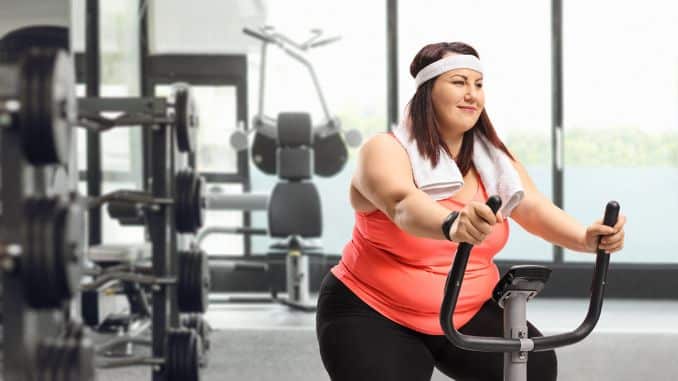
If cardiovascular fitness is your goal, stationary biking is one of the most effective ways to burn calories and shed fat.
Cycling combines cardio with resistance, helping you torch calories while preserving lean muscle mass.
- Calorie Burn: A 30-minute moderate ride can burn between 200-300 calories, while a high-intensity session can burn 400+ calories.
- Boosts Metabolism: Regular cycling elevates your metabolic rate, meaning your body continues burning calories even after you finish your workout.
- Targets Belly Fat: Research suggests that cycling reduces visceral fat (the harmful fat around your organs). Helping shrink your waistline and improve metabolic health.
For the best fat-burning results, incorporate high-intensity interval training (HIIT) into your cycling routine.
This method alternates between short bursts of maximum effort and periods of low-intensity recovery. Leading to faster calorie burn and increased fat loss compared to steady-state cardio alone.
3. Strengthens and Tones Muscles
Many people think of cycling as just a cardio workout. But, it’s also a highly effective way to strengthen and tone muscles, particularly in the lower body.
Every pedal stroke engages the quadriceps, hamstrings, glutes, and calves, helping develop lean muscle and endurance.
Increasing the resistance on a stationary bike mimics uphill climbs, forcing your muscles to work harder—similar to lifting weights for your legs.
In addition to lower-body strength, maintaining proper posture while cycling activates the core muscles, improving stability and balance.
Unlike running, which primarily burns calories, cycling strengthens and tones the lower body muscles, contributing to improved definition and endurance over time.
If your goal is to build strength, incorporate resistance-based workouts by increasing the tension on the bike and focusing on slow, controlled pedal strokes.
This engages the fast-twitch muscle fibers, which are responsible for power and explosive strength.
4. Easy on the Joints & Ideal for Injury Recovery
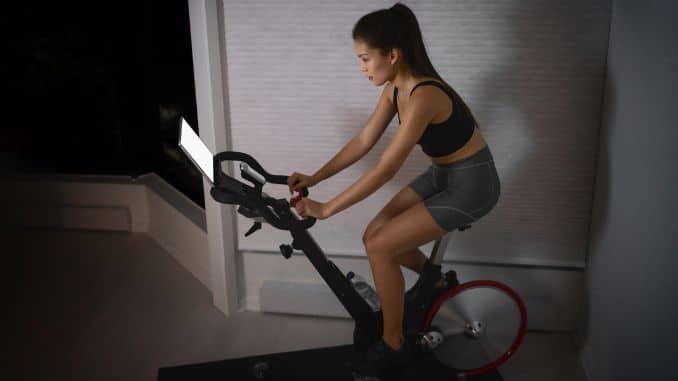
One of the biggest advantages of stationary biking [2] is that it’s a low-impact exercise. Making it gentle on the joints while still providing an intense workout.
Unlike high-impact activities like running or jumping, cycling keeps the movement smooth and controlled, reducing strain on the knees, ankles, and hips.
However, it’s crucial to ensure proper bike fit, as a poorly adjusted stationary bike hurts knees and other joints.
This makes stationary biking an excellent option for:
- People with joint pain or arthritis, as it allows movement without excessive pressure on sensitive areas.
- Individuals recovering from injuries, as it helps strengthen muscles and improve mobility without the risk of re-injury.
- Seniors and beginners, as it provides a safe and controlled environment to improve fitness without excessive stress on the body.
For those looking for a pain-free way to stay active, cycling offers a low-risk, high-reward option that can be adjusted to any fitness level.
Remember, though, that even low-impact exercises like stationary biking can cause discomfort if a stationary bike hurts knees due to improper form or setup.
5. Enhances Mental Well-Being & Reduces Stress
Exercise isn’t just about physical health—it’s also one of the best natural ways to boost mental well-being.
Stationary biking triggers the release of endorphins and serotonin, neurotransmitters that improve mood, reduce stress, and increase feelings of happiness.
Cycling has been shown to:
- Reduce stress and anxiety by lowering cortisol levels.
- Combat depression by promoting the release of dopamine, the brain’s “feel-good” chemical.
- Improve sleep quality by regulating melatonin production, helping fight insomnia.
- Boost brain function and focus, enhancing cognitive performance and mental clarity.
To make workouts even more mentally engaging, try pairing your ride with upbeat music, guided cycling classes, or virtual scenic rides.
This adds an extra layer of motivation and makes workouts feel less like exercise and more like an experience.
How to Get the Most Out of Your Stationary Bike Workouts?
A. Choosing the Right Bike
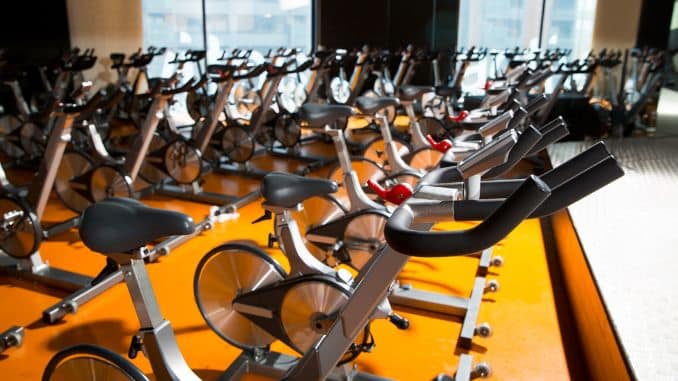
Not all stationary bikes are created equal, and choosing the right type depends on your fitness goals, experience level, and physical condition.
3 Primary Types of Stationary Bikes
— upright, recumbent, and spin bikes — each offer unique benefits.
Choosing the right bike depends on your goals:
- If you want a balanced mix of cardio and strength, an upright bike is a great starting point.
- If you’re recovering from an injury or need extra support, a recumbent bike is the safest option.
- If you’re looking for maximum calorie burn and muscle engagement, a spin bike will deliver the intensity you need.
1. Upright Bike
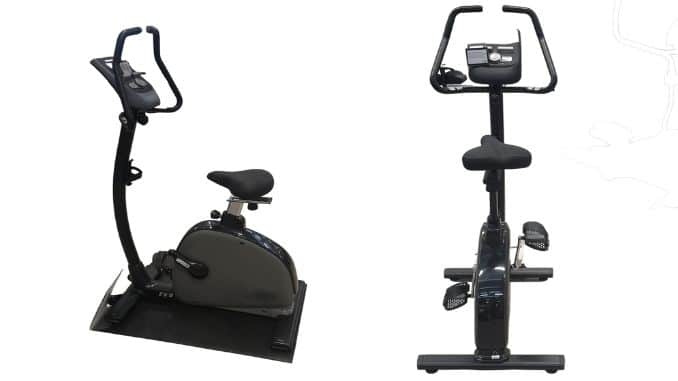
An upright bike is the most common and closely resembles an outdoor road bike. The pedals are positioned directly below the rider, encouraging engagement of the core, glutes, quads, and hamstrings.
This bike is great for general fitness, calorie burning, and cardiovascular training. It’s a solid option for beginners and those who want a simple yet effective stationary bike workout without the intensity of a spin bike.
2. Recumbent Bike
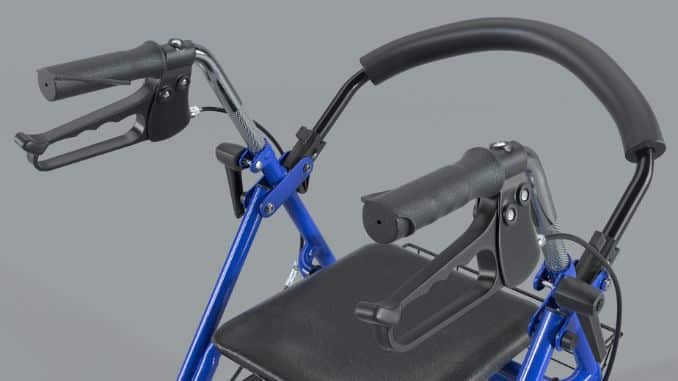
A recumbent bike, on the other hand, features a reclined seat with back support, making it a more comfortable and low-impact option.
This design reduces strain on the lower back and joints, making it ideal for older people, individuals with mobility issues, or those recovering from injuries.
While it still provides a good cardiovascular workout, it does not engage the core and upper body as much as an upright or spin bike.
3. Spin Bike
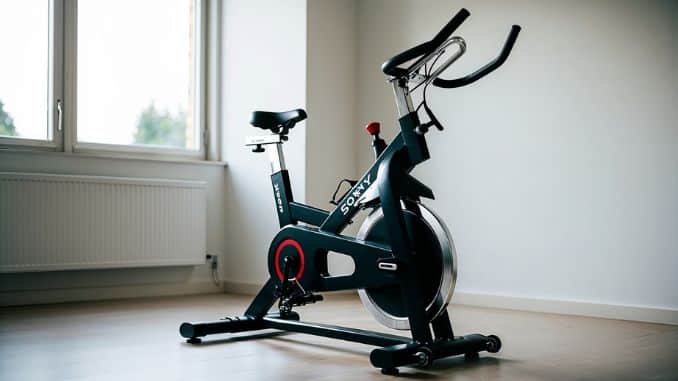
For those looking for high-intensity training, a spin bike is the best choice.
Spin bikes often feature handlebars designed for push-pull movements, which engage the arms and shoulders during high-intensity intervals.
Used in cycling studios and HIIT classes, spin bikes allow for standing climbs, sprint intervals, and heavy resistance training, mimicking real road cycling.
They engage not only the lower body but also the core and upper body, making them ideal for those wanting a challenging, full-body workout.
B. Proper Form & Technique
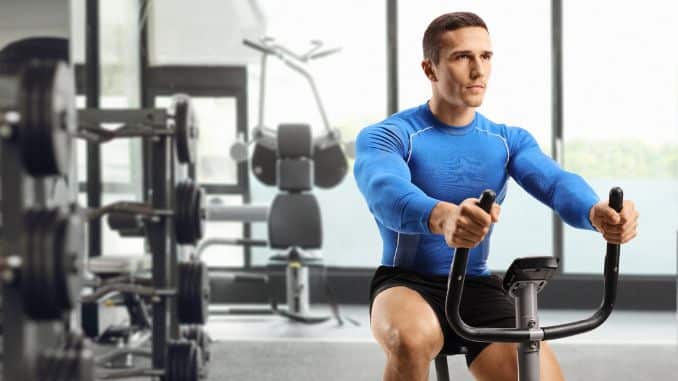
No matter which bike you choose, proper form and technique are essential to prevent injuries and ensure an effective stationary bike training session.
Many riders overlook small adjustments that can significantly impact performance and comfort.
Remember that using a stationary bike with improper form might lead to discomfort or pain, like when a stationary bike hurts the knees.
The first step is seat height adjustment.
If your seat is too low, you’ll place unnecessary strain on your knees, leading to discomfort and inefficient pedaling.
If it’s too high, it can lead to overstretching the legs, reducing pedaling efficiency and increasing the risk of hip strain.
The ideal seat height allows for a slight bend in the knee (about 25-30 degrees) when the pedal is at its lowest point.
Posture also plays a crucial role in avoiding fatigue and injuries.
Your back should remain straight, shoulders relaxed, and core engaged to support stability.
Many people make the mistake of hunching over the handlebars, which can strain the lower back and wrists.
Instead, lightly grip the handlebars while maintaining an upright but relaxed position.
Another important factor is pedal stroke efficiency. Instead of simply pushing down on the pedals, focus on a smooth circular motion by pulling up slightly on the recovery phase.
This activates more muscles, particularly the hamstrings and calves, rather than over-relying on the quads.
For those using clip-in cycling shoes, this technique becomes even more effective as it allows for greater power transfer.
Some common mistakes to avoid include:
- Pedaling too fast with no resistance – This is ineffective and can lead to poor muscle engagement. Always keep some tension on the pedals.
- Using too much resistance too soon – This can put excessive strain on the knees and reduce endurance. Gradually increase resistance levels as your strength improves.
- Leaning too much on the handlebars – This reduces core engagement and may cause wrist discomfort. Your hands should rest lightly on the bars, not support your weight.
By maintaining proper form, adjusting your seat correctly, and focusing on an efficient pedal stroke. You’ll create a more effective and safer workout.
C. Workout Routines for Different Goals

Your indoor cycling routine should match your fitness objectives, whether you’re aiming for fat loss, endurance, or muscle strength.
It’s important to choose a routine that aligns with your fitness level and physical condition to avoid potential issues, such as when a stationary bike hurts knees.
Different training styles offer unique benefits, so structuring your rides accordingly will help you achieve optimal results.
1. Weight Loss: High-Intensity Interval Training (HIIT):
For those looking to burn calories quickly and shed fat, HIIT workouts are the most efficient way to use a stationary bike.
This method alternates between short bursts of high-intensity effort and brief recovery periods, forcing the body to work harder and burn more calories in less time.
A typical HIIT stationary bike workout might look like this:
- Warm-up: 5 minutes of moderate pedaling at low resistance.
- Sprint: 30 seconds at high resistance, pedaling as fast as possible.
- Recovery: 60 seconds at moderate resistance, slowing down slightly.
- Repeat: 8-12 rounds, adjusting intensity as needed.
- Cool-down: 5 minutes of low-resistance pedaling to bring heart rate down.
This approach not only accelerates fat loss but also boosts metabolism. Meaning you’ll continue burning calories even after the workout is over.
HIIT sessions can be done in just 20-30 minutes, making them ideal for busy schedules.
2. Endurance: Steady-State Cardio Sessions
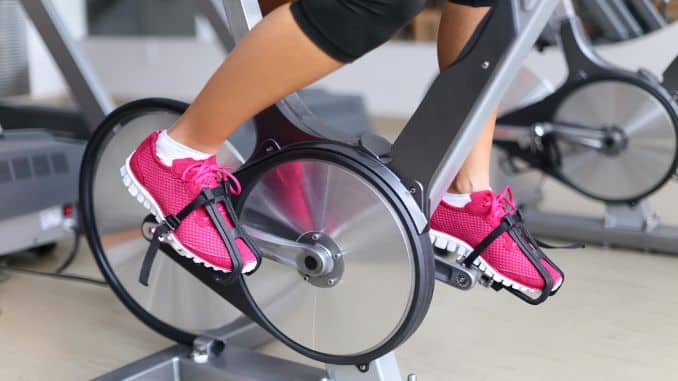
If your goal is to build stamina and improve cardiovascular health, steady-state training is a great option.
This involves maintaining a moderate, consistent pace for an extended period. Allowing the heart and lungs to adapt to prolonged exertion.
A steady-state endurance ride might consist of:
- Warm-up: 10 minutes of light resistance cycling.
- Main ride: 40-60 minutes at moderate resistance, keeping heart rate between 60-75% of max heart rate.
- Cool-down: 5-10 minutes of low-intensity pedaling.
This type of training is ideal for those preparing for long-distance cycling, running, or general heart health.
It also helps the body become more efficient at using fat as fuel, which benefits long-term weight management.
3. Strength Building: Resistance-Based Workouts
For those focused on lower-body strength, increasing resistance is key.
Instead of emphasizing speed, this method mimics climbing hills, engaging the quads, hamstrings, and glutes while improving muscle endurance.
However, it’s important to gradually increase resistance to avoid overexerting the knees. As a stationary bike hurts knees when the resistance is too high, especially for beginners
A strength-based stationary bike workout might include:
- Warm-up: 5 minutes of moderate pedaling.
- Hill Climb: 3-5 minutes at high resistance, maintaining slow, controlled pedaling.
- Recovery: 2 minutes at medium resistance.
- Repeat: 5-7 rounds.
- Cool-down: 5 minutes of light resistance pedaling.
Strength-focused rides improve muscle definition and power, making them a great alternative or complement to traditional weight training.
Common Myths About Stationary Biking
Despite its growing popularity, stationary biking is often misunderstood, with many myths surrounding its effectiveness, muscle-building potential, and enjoyment factor.
These misconceptions can discourage people from giving it a try or lead them to underestimate its benefits.
The truth is, that indoor cycling can be just as effective, engaging, and transformative as outdoor cycling or other forms of exercise—if done correctly.
It’s important to remember that while stationary biking is generally safe and effective, incorrect form or setup can lead to problems, such as when a stationary bike hurts knees.
Let’s break down and debunk the most common myths about stationary biking.
1. “It’s Not as Effective as Outdoor Cycling”

Many people believe that stationary biking can’t compare to other exercises, in terms of intensity, endurance-building, and calorie-burning potential.
The reality? A well-structured indoor cycling session can be just as challenging—if not more—than an outdoor ride.
The main difference between indoor and outdoor cycling is the lack of environmental factors such as wind resistance, varied terrain, and elevation changes.
However, these can be replicated on a stationary bike by adjusting resistance levels and incorporating interval training, hill climbs, and endurance rides.
Some studies suggest that stationary biking can be more efficient than outdoor cycling because there are no interruptions like traffic, stoplights, or uneven terrain that force you to slow down.
With continuous pedaling, controlled intensity, and a structured workout, riders can achieve the same—if not better—results indoors.
Additionally, stationary biking allows for targeted training.
Cyclists can use heart rate monitors, power meters, and resistance settings to precisely control their efforts, ensuring that every session is optimized for maximum cardiovascular and muscular benefits.
Whether you’re training for endurance, HIIT, or strength, indoor cycling offers a highly effective and customizable alternative to outdoor riding.
Stationary biking can be just as intense, effective, and results-driven as outdoor cycling when programmed correctly.
2. “You Won’t Build Muscle on a Bike”
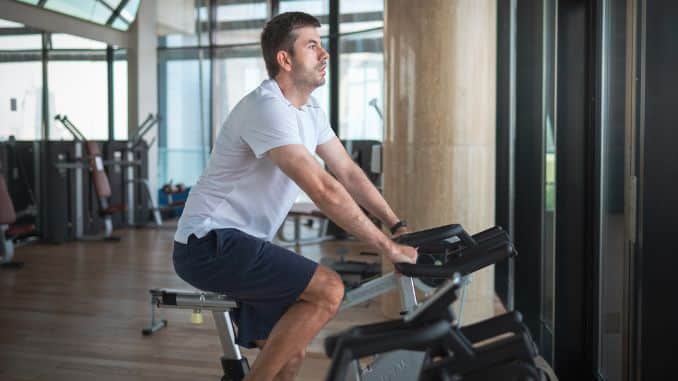
Another common myth is that stationary biking only burns calories and doesn’t contribute to muscle growth.
While it’s true that cycling is primarily a cardiovascular workout, it also engages and strengthens multiple muscle groups, particularly in the legs, glutes, and core.
By increasing resistance levels, stationary biking can effectively simulate strength training for the lower body.
Just like lifting weights, pedaling against high resistance forces the quads, hamstrings, glutes, and calves to work harder, leading to muscle activation [1] and endurance improvements over time.
Moreover, high-intensity interval training (HIIT) and resistance-based cycling workouts can build fast-twitch muscle fibers, enhancing both power and strength.
Riders who consistently include hill climbs, resistance intervals, and standing sprints in their training can develop stronger, more defined leg muscles.
Additionally, cycling engages the core muscles more than people realize.
Maintaining proper posture and stabilizing the body during resistance-heavy rides activates the abdominal muscles, contributing to improved core strength.
Increasing resistance and incorporating strength-focused cycling sessions can lead to muscle growth and improved muscular endurance, particularly in the lower body.
3. “Stationary Biking is Boring”
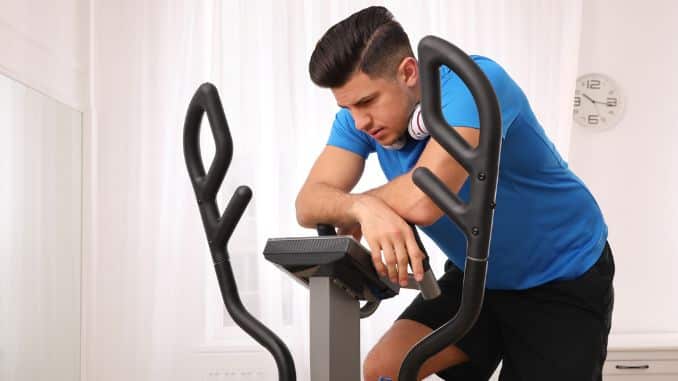
One of the biggest misconceptions about stationary biking is that it’s monotonous and lacks variety.
While pedaling in place might seem dull at first glance, modern indoor cycling offers countless ways to stay engaged and motivated.
For starters, virtual rides and interactive cycling apps like Peloton, Zwift, and iFit have revolutionized the indoor cycling experience.
These platforms allow riders to join live classes, compete with others, or cycle through scenic landscapes, making workouts more immersive and enjoyable.
Music also plays a huge role in making stationary biking fun.
A well-curated playlist with upbeat, high-energy songs can keep motivation levels high, setting the rhythm for an engaging ride.
Some riders prefer listening to podcasts or audiobooks, turning their workout into an opportunity for entertainment or personal development.
Another great way to avoid boredom is by mixing up workouts.
Instead of riding at a steady pace every session, incorporating interval training, endurance challenges, and resistance-based climbs can keep things dynamic and stimulating.
Group cycling classes—either in-person or virtual—also add an element of accountability and social interaction, making the experience more enjoyable.
For those who prefer a goal-oriented approach, tracking progress through performance metrics like distance, cadence, heart rate, and power output can add a competitive edge to each ride.
Setting personal records or working towards a fitness milestone keeps workouts exciting and purpose-driven.
Conclusion
The benefits of indoor biking go far beyond just burning calories—it’s a low-impact, high-reward workout that strengthens your heart, tones your muscles, and even improves your mental well-being.
Whether you’re looking to lose weight, boost endurance, or build lower-body strength, stationary biking provides a safe, effective, and accessible way to reach your fitness goals.
Unlike other forms of cardio, it’s gentle on the joints, making it perfect for people of all ages and fitness levels.
Plus, with options to adjust resistance, vary workout intensity, and even join virtual cycling classes, boredom is never an issue.
If you’re looking for a versatile, time-efficient, and results-driven way to stay fit, it’s time to make stationary biking a part of your routine.
Whether you’re just starting or a seasoned athlete, a stationary bike can transform your fitness journey. Hop on, set your goals, and start pedaling toward a healthier you!
Solve your stationary bike knee pain with our guide, Knee Pain Solved, covering effective pain relief strategies to keep you riding comfortably.
Frequently Asked Questions (FAQs)
Is stationary biking good for weight loss?
Yes! Stationary biking is an excellent way to burn calories and lose weight. A 150-pound individual can burn approximately 200-300 calories during a 30-minute moderate ride, with high-intensity sessions burning upwards of 400 calories. It also helps boost metabolism and reduce belly fat over time.
Can stationary biking cause knee pain?
While stationary biking is a low-impact workout, improper bike setup, incorrect seat height, or excessive resistance can lead to knee pain. Adjusting your bike correctly and maintaining proper form can help prevent discomfort.
How do I adjust my stationary bike to prevent knee pain?
To minimize knee strain, ensure your seat height allows for a slight bend (25-30 degrees) in your knee at the lowest pedal position. Your knees should not lock out or extend too much. Also, adjust the handlebars to prevent excessive leaning forward.
What’s the best stationary bike setup for knee pain relief?
A recumbent bike is the best option for those with knee pain since it provides back support and reduces joint strain. If using an upright or spin bike, proper seat height and resistance adjustments are crucial to prevent unnecessary stress on the knees.
How does stationary biking compare to running for joint health?
Stationary biking is much easier on the joints than running because it’s low-impact. Running can place significant stress on the knees, hips, and ankles, while biking provides smoother movement, making it ideal for individuals with joint pain or arthritis.

